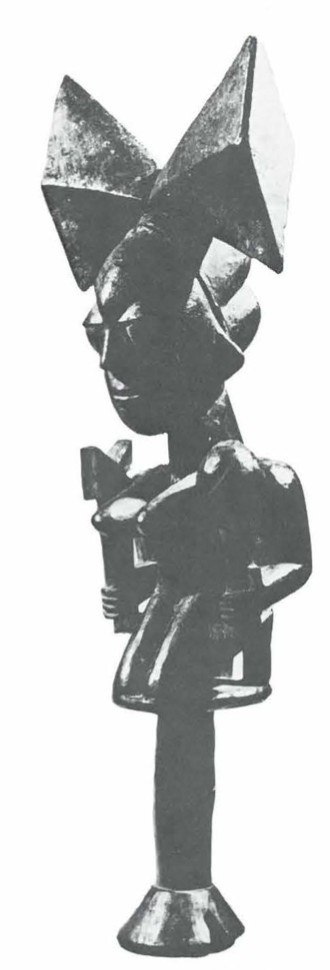
Shango
We might think of Alex Haley’s Roots, it is a fact that both book and television treatment have sparked our curiosity and sent thousands of Americans to dusty files and microfilm viewers in search of their ancestry. That’s fine, we would all like to know where we came from, but such searches are often futile — especially for Black Americans — and if Mr. Haley’s findings are indeed factual, he must be considered singularly fortunate. As we scramble down the trunk of the old family tree and try to get a historical perspective on ourselves, we do well to investigate another important, if less personal, part of our background — our cultural heritage.
If you are of Caribbean descent, you might start by paying a visit to the Visual Arts Research and Resource Center Relating to the Caribbean [22 East 54th Street, New York — third floor] where an exhibit entitled African Religions in the Caribbean: Santeria and Voodoo is currently running. It focuses on two religions brought to Cuba and Haiti by the Yoruba and Dahomey tribes, and offers them as examples of cultural traditions perpetuated by Caribbean people today.
When African slaves were brought to the Caribbean during the 16th and 17th centuries, so were their varied religious beliefs, an intangible source of strength that gave them the courage to face unspeakable adversity. Because these slaves represented disparate West African tribes and kingdoms, their religious rituals were at variance with each other, but their basic doctrine was the same: a respect for the gods, nature, family, ancestors, elders, community, and oneself.
Realizing the strength inherent in all religious beliefs, the white man at first sought to stamp out any form of worship, but when, he eventually began to impose his own Christian beliefs on the Black man, the result was an interesting syncretism: the slaves developed a system whereby they could identify their African Gods through Christian images. Thus, in the guise of Christianity, the transplanted Africans and generations of their family to come were able to perpetuate an important cultural heritage. In slightly different but clearly traceable forms, the centuries-old customs today continue to be observed in the Caribbean as well as in the urban centers of North America to which descendants of slaves have migrated.
The current exhibit at the Visual Arts Research and Resource Center — which closes December 29th — does not divulge the sacred and private aspects of Santeria and Voodoo, but it attests in a most graphic way to the continuance of ancient African customs in the Space Age. Whether your roots go back to Ireland, Indonesia, Iceland or the Ivory Coast, ROUTES recommends that you go to see this fascinating exhibit.
Keep reading this issue – next article
See a list of all archived ROUTES editions
